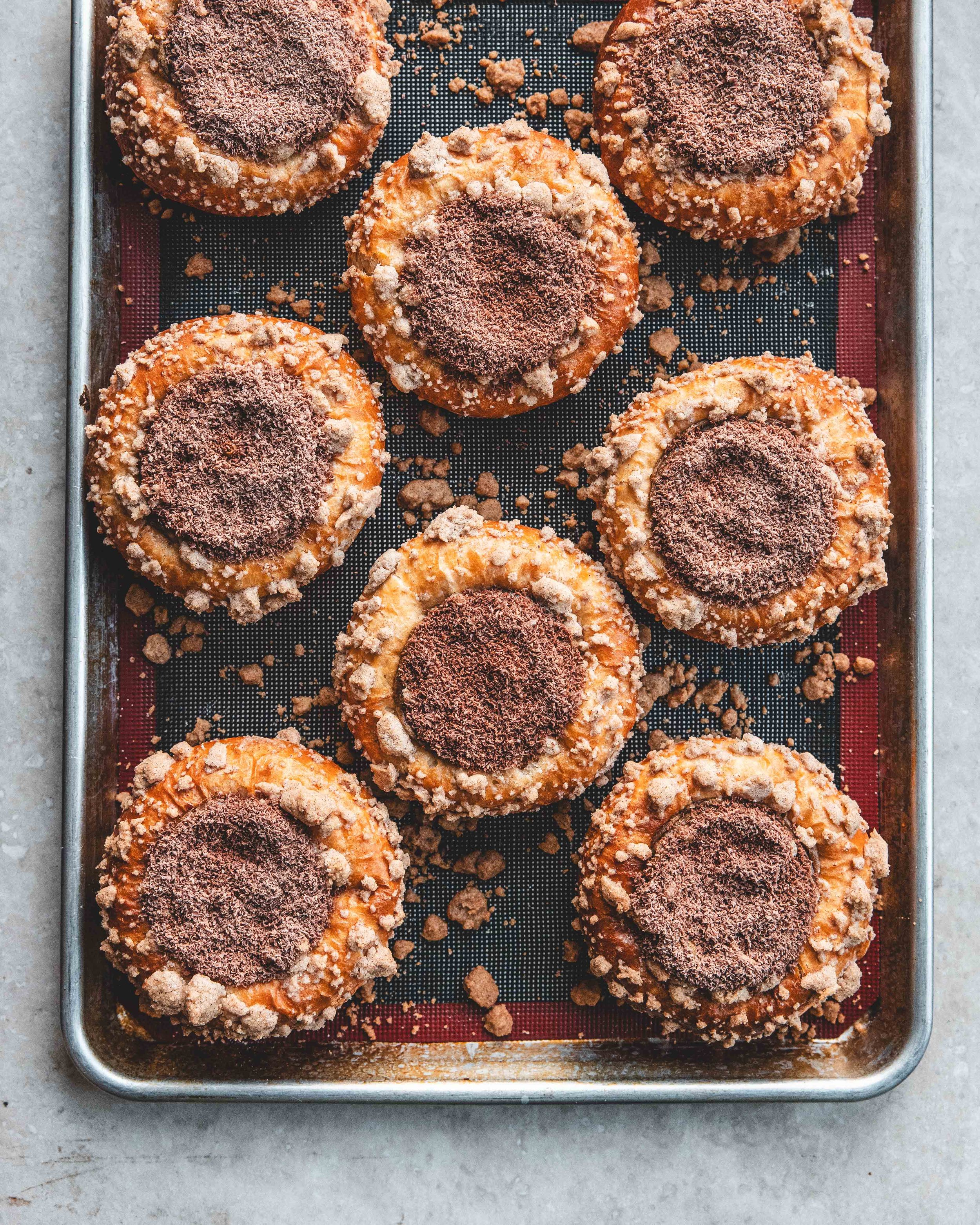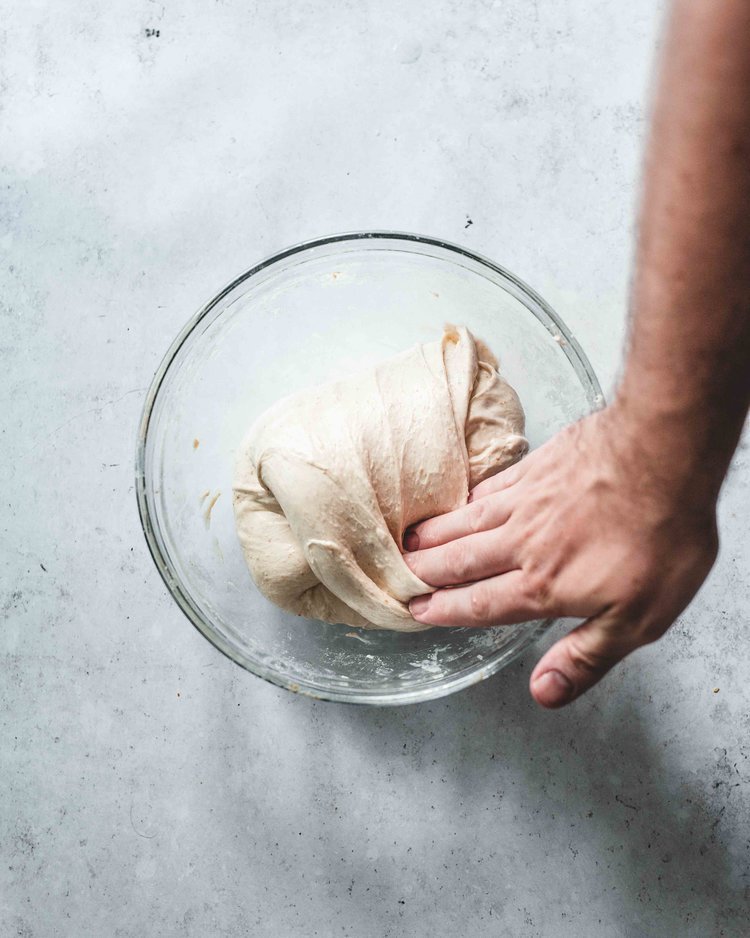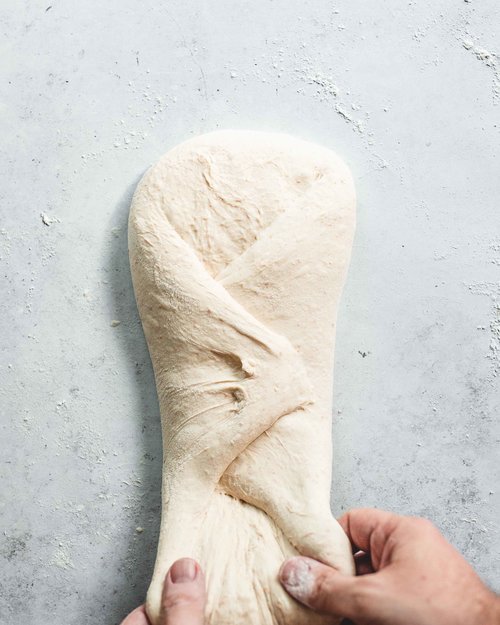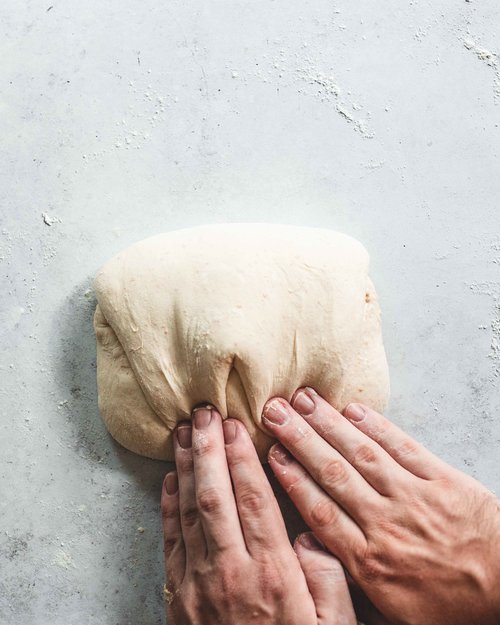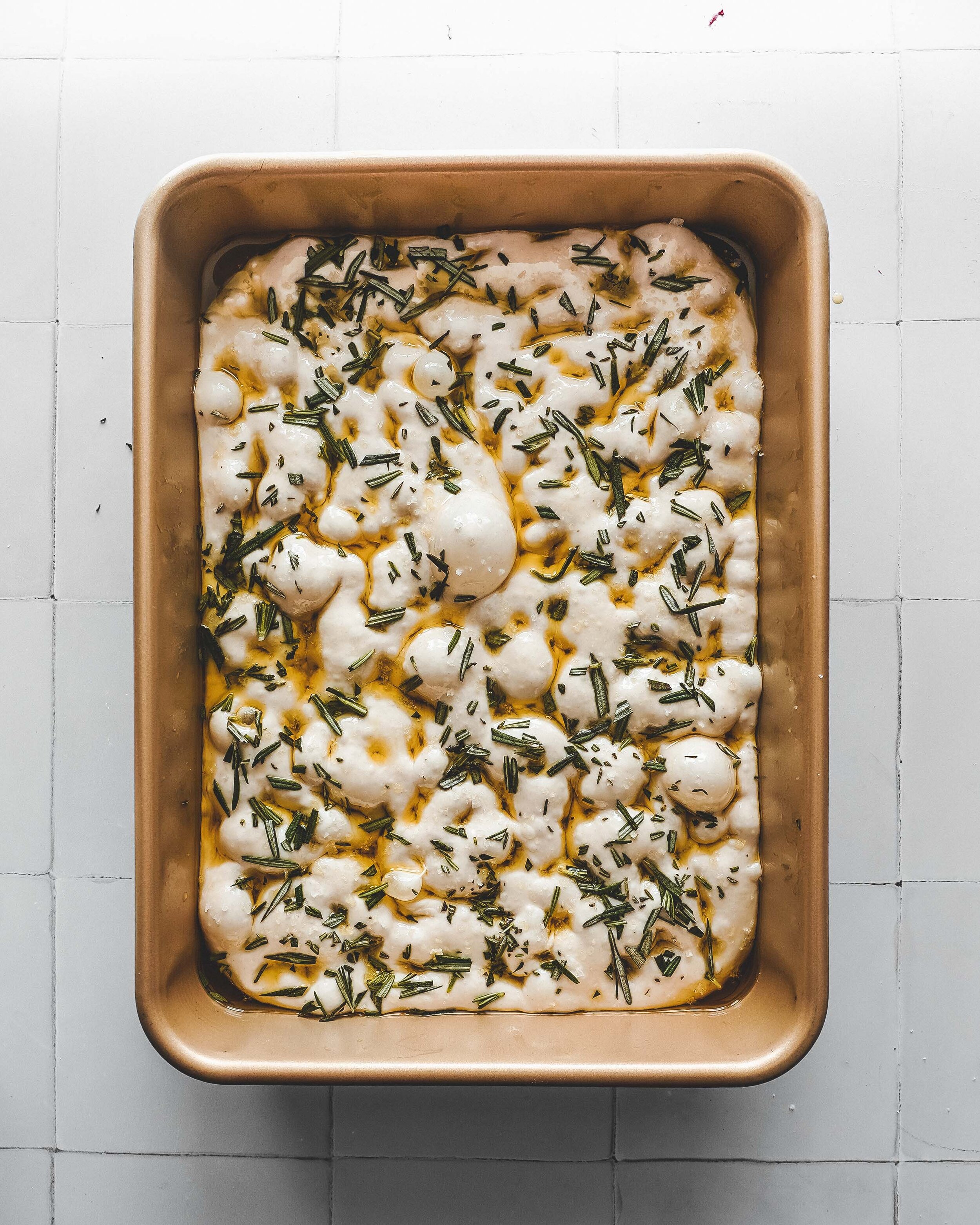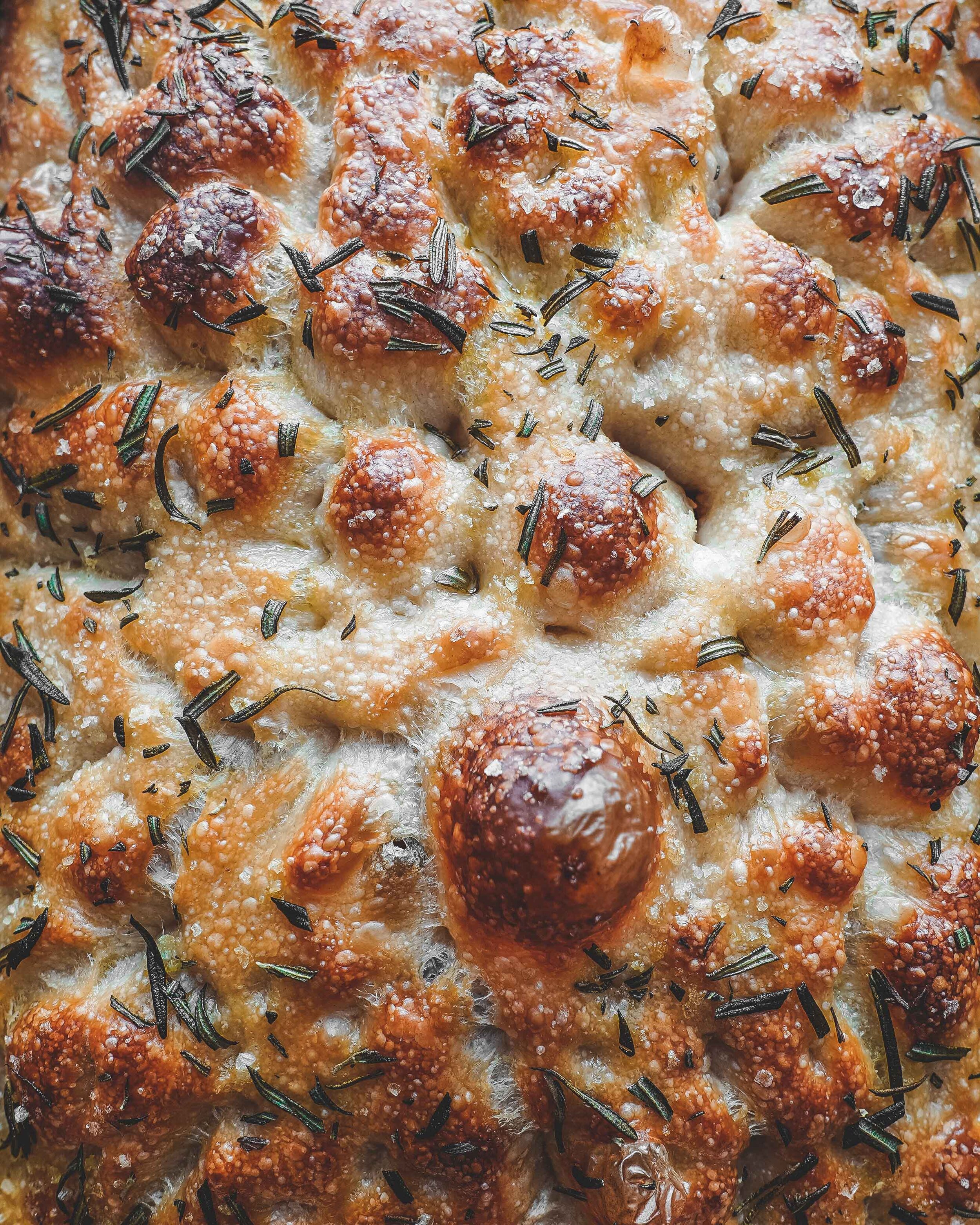This post is sponsored by Ozone Coffee UK
It’s time for Brunch. I’m not talking eggs Benedict, or avocado on toast, but coffee absolutely does make an appearance. This weeks recipe is a fabulous layering of flavours and textures and a coffee lovers dream. It starts with a classic brioche, which is treated almost like pastry, to make a tart base which is filled with a coffee custard and surrounded by a lightly spiced crumb. To finish, the custard is covered with a thin layer of grated chocolate. Brioche, coffee custard, spiced crumb and chocolate, sounds like a brilliant brunch dish if you ask me.
The centrepiece of this dish is a rich coffee custard and to get the perfect flavour I have partnered with Ozone Coffee and am using their brilliant Festive Blend. Ozone, one of my favourite London coffee roasters, have been releasing an annual festive blend for a couple years now and not only is it a brilliant coffee it also makes a great stocking stuffer; the beautiful packaging is even designed to be gifted. If you don’t know Ozone they are originally from New Zealand but have also been in London for over 10 years now. They have 4 locations across the city and at their two East London locations, Shoreditch and, my personal favourite, London Fields they also serve a mean brunch. If you’re in the area you should absolutely go and check out their new winter menu which launched this week.
Flavour-wise the coffee blend is inspired by mince pies and has tasting notes of sweet pastry, dried fruits and brown sugar. The flavours in the dish were designed to pair beautifully with the coffee; the spicing in the crumb is wintery and festive and the crunch reminds you of pastry. If you want to push the mince pie comparison even more you could even add a little alcohol to the custard, some rum or brandy would be perfect.
You can buy the Ozone Festive Blend in all of their locations and online on their website here.
Brioche Tips
Making brioche is not difficult but there are some things to bear in mind. When trying to develop gluten, fat can prevent that. This is why the butter isn’t added straight away. If the butter is added at the start of mixing, the flour becomes coated in fat, and the liquid in the bread cant team up with the flour as easily to develop gluten. Building up the gluten, before adding the butter is added, helps create a properly kneaded dough but adding the butter almost pulls this back a little and more kneading is required to ensure a properly elastic dough. You might think the kneading times are a little overblown but this is what you need to properly develop the dough. The reason for all of this kneading is a finished brioche with the proper texture, an under-kneaded dough will end up as dense brioche, too bready in texture. Well developed brioche, that is also properly proofed, will be incredibly light and fluffy, and will almost melt in the mouth.
Winter Coffee Brioche Tarts
Makes 8
Brioche
180g plain flour
180g strong white bread flour
20g caster sugar
1 tsp fine sea salt
7g fast action dried yeast
85ml whole milk
3 large eggs, plus one for egg wash
150g unsalted butter, room temperature
Coffee Custard
200ml whole milk
50ml double cream
2 tbsp coffee beans, roughly ground.
1 large egg
2 large egg yolks
100g caster sugar
25g cornflour
25g butter, diced
50g milk chocolate, grated, for garnish
Spiced Crumb
50g plain flour
50g caster sugar
1/4 tsp ground cardamom
1/4 tsp ground cinnamon
1/8 tsp freshly ground nutmeg
Pinch of fine sea salt
40g unsalted butter
To make the brioche add the two flours, the sugar, salt and yeast to a large bowl and whisk to combine. Add the milk and eggs and using an electric stand mixer knead for about 10-15 minutes or until the dough is smooth, elastic and no longer sticking to the sides of the bowl. Add the diced butter and continue mixing until fully combined. Once the butter has been incorporated into the dough continue kneading until, once again, the dough is smooth and silky and no longer sticking to the sides of the bowl, this should take another 10-15 minutes. Tip the dough out onto your work surface and form into a ball. Place the dough into a lightly greased bowl and cover with clingfilm. Allow the dough to rest at room temperature for 30 minutes before moving to the fridge and chilling overnight.
For the coffee custard place the milk and cream into a large saucepan along with the ground coffee and bring to a simmer. Once at temperature turn off the heat, cover and set aside for about an hour to infuse the flavour of the coffee. Once the hour is up, bring the milk mixture back to a simmer then pour through a fine mesh sieve, into a measuring jug, to strain out the ground coffee. The coffee can absorb a little of the liquid so top up with extra milk if needed. Whilst the milk is coming to a simmer add the egg, yolks, sugar and cornflour to a large bowl and whisk together. Pour the strained milk mixture onto the egg mixture, whisking as you pour to prevent the eggs from scrambling. Pour the custard mixture back into the saucepan and place over medium heat and cook, whisking constantly, until the mixture bubbles and thickens. Cook for another minute before scraping into a bowl. Add the butter and mix until combined. Cover with clingfilm and refrigerate until needed.
To assemble the brioche remove the dough from the fridge and tip out onto a lightly floured worksurface. Press flat and then divide into 8 equally sized pieces. Form each piece of dough into a neat round and then roll out into an 11cm circle. Lightly grease eight 10cm loose bottomed tart tins and use the discs of brioche to line the tart tin as if using pastry. Place the brioche tarts onto a large baking tray and cover lightly with clingfilm and set aside until the brioche has doubled in size, this should take about 2 hours.
Whilst the brioche is rising make the crumb topping. Add the flour, sugar, spices and salt to a mixing bowl and whisk to combine. Add the butter to a small pan and melt. Pour the melted butter into the flour mixture and use a fork to stir to combine, making a crumble like topping. Refrigerate until the brioche has finished proofing.
When almost ready to bake preheat the oven to 190ºC (170ºC Fan).
To assemble the tarts remove the custard from the fridge and beat until smooth and silky. Using your lightly floured fingers, gently reinforce the depression in the middle of the brioche tarts (as the brioche proofs the depression starts to fill in). Brush the outside of the brioche with egg wash and spoon, or pipe the custard into the middle of the brioche buns. Sprinkle the crumb around the outside of the brioche.
Bake in the preheated oven for about 20-25 minutes or until the brioche is golden brown. When removed from the oven the custard will have puffed up but as it cools will sink lightly. Set aside until the brioche is cooled.
To finish the brioche scatter the grated chocolate over the custard. To make this neat I place a small cookie cutter on the top of brioche, so that the entire custard is covered, and spoon in the chocolate so it forms a neat circle.
The brioche is best served on the day it is made but can be covered and stored for a further day.
